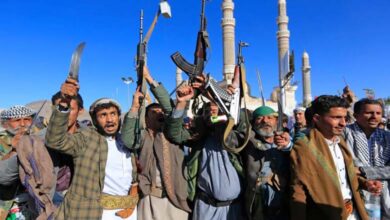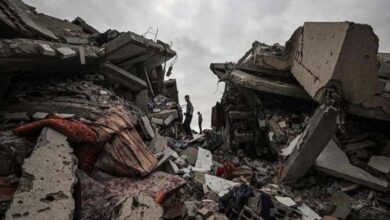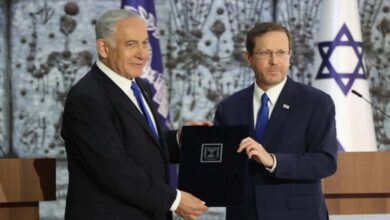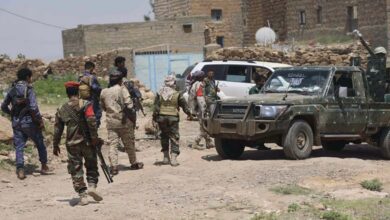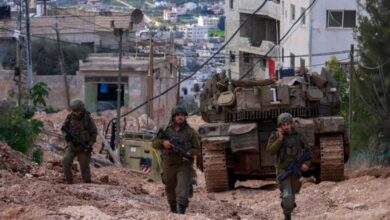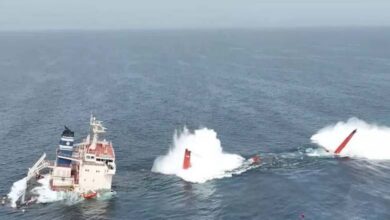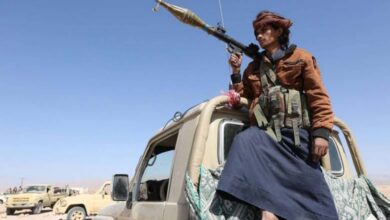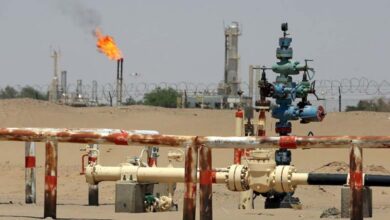The Five Claws: Tracking Houthi Intelligence Agencies
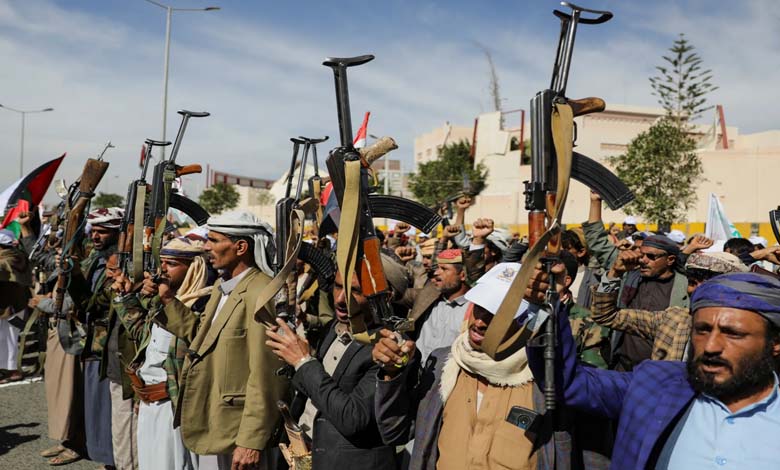
Through a complex network of intelligence agencies directly overseen by their leader, the Houthis have established the foundations of a “State of Fear” across the territories under their control—drawing heavily on methodologies employed by Iran.
Since their inception in the 1980s, the Houthi militia has relied on security cells for intelligence gathering and espionage. However, it was not until late 2006 that they formally began building their own intelligence system, starting with the creation of the so-called Preventive Security Apparatus.
-
Houthis Impose Naval Blockade on Haifa Port
-
Senior Houthi Commanders Missing: The Militia Still Searching for Losses at Sea
At the time, the group—backed extensively by Iran—tasked its senior figure Taha al-Madani (who was killed in a coalition airstrike in mid-2015) with founding the intelligence agency. His mission was to prevent infiltration, monitor the group’s members, and produce intelligence capable of manipulating tribal divisions to safeguard Houthi power.
Now, entering the third decade of their warfare, the Houthis operate around five major intelligence bodies, several of which are modeled on Iran’s structure—where more than 16 intelligence agencies exist, according to various reports.
The Houthi apparatus and the key shadow leaders who run them, all managed through the so-called “Leader’s Office” under the authority of Abdul-Malik al-Houthi.
-
Houthi Attacks Threaten the Aden–Sanaa Lifeline: Civilian Suffering Deepens
-
The ceasefire with the Houthis was not an American concession, but the result of Houthi setbacks
1. Preventive Security Apparatus
Founded by Taha al-Madani—internally dubbed “The Leader’s Shadow”—and modeled after Iran’s IRGC intelligence unit, this agency was built to prevent infiltration and seal vulnerabilities.
It is currently headed by Ahsan Abdullah Ahsan Ali al-Humran (known as Abu Hassan), a close confidant and relative by marriage of the Houthi leader, and one of the group’s most powerful and trusted figures.
This is considered the most dangerous and complex agency within the Houthi intelligence network, dominated by leaders from Saada. Key figures include Hassan Abdulrahim al-Humran (Deputy Head), Abdulazim Ali Ahmed al-Azzi (Deputy Director), and Taha Ismail al-Dailami (Head of Investigations).
-
Yemeni Fears over Houthi Exploitation of U.S. Truce
-
Seizure of Sabotage Equipment and Explosives… Houthi Smuggling Networks Crumble
Although its structure remains largely unknown, media sources identify at least seven operational divisions under the Humran family’s control:
- Foreign Operations
- Surveillance and Analysis
- Counterespionage
- “Counterterrorism” – run by Ahmed al-Humran
- Border and Airport Security – led by Abdulrahim al-Humran
- VIP Protection – led by Ibrahim al-Humran
- Economic Security – managed by Abdulmalik al-Humran
-
Washington’s Secret Battle: Who’s Behind Houthi Financing?
-
Second Attack Within Hours: Israel Announces Interception of Houthi Missile
The agency has branches in every Houthi-controlled province, including:
- Saada – Abdul Fattah al-Humran
- Sanaa – Mohamed Haidara
- Capital Secretariat – Abdullah al-Amir
- Hodeidah – Fouad al-Washli
- Marib – Ghalib Abu Nab
- Al-Dhale – Ismail al-Washli
-
Explosions Rock Sanaa as U.S. Strikes Houthi Positions
-
New Contacts Between the Muslim Brotherhood and the Houthis… Details
Mandate:
- Protect the Houthi leader and senior commanders, and control internal communications
- Provide safe zones for missile and drone force leaders, and protect the militia from internal threats
- Screen the backgrounds of all recruits entering ideological “cultural courses” or training camps
- Review field commanders’ reports and ensure fighters don’t desert
- Intervene during internal faction clashes, and arrest members suspected of disloyalty
- Harbor foreign fighters from ISIS and al-Qaeda and facilitate their operations against Yemeni government forces
-
An Oil Lifeline in Houthi Hands… Ras Issa in the Eye of the Storm
-
Houthis Hide Their Dead… Funerals Banned and Condolences Forbidden
According to security sources cited by Al-Ain, the Preventive Security Apparatus runs over 46 secret detention centers, while its Internal Security Sector is based inside the former Dutch Embassy in Sanaa.
2. Security and Intelligence Service
In 2019, the Houthis dissolved the Political and National Security agencies and established the Security and Intelligence Service, led by Abdulhakim al-Khaiwani (Abu al-Karar), with Abdulqadir Ahmed Qassem al-Shami as his deputy.
This entity mirrors Iran’s Ministry of Intelligence and National Security and is staffed by some of the militia’s most dangerous officers, including Abdulrab Jarfan, Fawaz Nashwan, Mohamed al-Washli, and Hassan al-Marani.
-
The Demons’ Deal: Houthis Release Al-Qaeda Terrorists to Reinforce Their Frontlines
-
Houthi Ballistic Missile Triggers Air Raid Sirens in Tel Aviv and Jerusalem
Key departments include:
- Internal Security – led by Mutlaq al-Marani (Abu Imad)
- Economic Affairs – headed by Khaled Mohamed Khalil
- Unit 30 – under Abu Owais
- Foreign Operations – led by Hassan al-Kuhlani (Abu Shahid)
It also operates a unit known as “Oil Alpha” that specializes in spying on dissidents using the infrastructure of the Ministry of Telecommunications.
The agency utilizes former National and Political Security buildings and prisons and has branches in every Houthi-held region, led by:
-
Houthi Forced Levies: Organized Looting of Citizens under the Pretext of Zakat
-
The Muslim Brotherhood and the Houthis… Playing Openly After “Under-the-Table” Alliances
- Rima – Moammar al-Jabboub
- Ibb – Zaid al-Muayyad
- Hodeidah – Hassan Souma’ah
- Amran – Hussein al-Khawlani
- Hajjah – Adel al-Lahji
- Marib – Mukhbit Taiman
- Taiz – Sami Abu Talib
- Al-Jawf – Taha Ali al-Sharif
- Al-Mahwit – Mohamed al-Wajih
- Saada – Maj. Gen. Mutlaq al-Marani
-
State of Panic and Anxiety among Houthi Terrorist Militias… Precautionary Measures Taken
-
“Tightened Measures”: Houthi Militias Hide Their Leader from “American Hell”
Mandate:
- Lead agency for abductions and arrests targeting activists, dissidents, and journalists
- Control various aspects of civilian life to suppress opposition
- Enforce the group’s extremist religious and political ideology
- Supervise a financial network to evade international sanctions, launder illicit funds, and finance arms purchases
- Collect taxes and revenues from exchange companies and businesses
- Facilitate coordination between the Houthis, al-Qaeda, and al-Shabaab
- Oversee foreign expansion into the Horn of Africa and Arab countries
-
Human Rights Organization Records 13,000 Houthi Violations in Yemen’s Al-Bayda
-
A Media Campaign Exposes the Brotherhood-Houthi Collusion – Details
3. Revolution Security Apparatus
In November 2022, senior security sources told Al-Ain that the Houthis were establishing a new military-intelligence unit called the Revolution Security Apparatus, to focus on battlefield operations. The unit is led by the son of the group’s founder, Hussein al-Houthi.
Months later, Abdul-Malik al-Houthi formally approved the agency under his direct supervision.
Mandate:
- Administer public affairs in Houthi-controlled areas
- Oversee planning, monitoring, and coordination among other intelligence units
- Function similarly to Iran’s Ministry of Intelligence (Ettela’at)
The agency is headed by Jaafar Mohamed Ahmed al-Marhabi (42), from Razeh District in Saada. Known as Abu Jaafar, he is responsible for protecting the Houthi leader’s family and co-founded the Preventive Security Apparatus. He was previously detained by Yemeni intelligence for participating in the 2004 Saada war.
-
Washington Allocates $15 Million to Disrupt Houthi Financing after Reclassifying Them as Terrorists
-
Houthis Launch Ideological and Military Recruitment Campaign for Students Amid Public Outrage
4. Police Intelligence Service
Built atop the defunct “Community Police,” this agency was formalized in August 2023 by Interior Minister Abdulkarim al-Houthi (the Houthi leader’s uncle). It was publicly announced in 2024 under the name Police Intelligence, modeled after Iran’s law enforcement intelligence service.
Ali Hussein al-Houthi, the founder’s son, was appointed to lead it. The agency’s headquarters is reportedly located in the former Jordanian Embassy and focuses on surveillance within neighborhoods and public spaces.
The unit consists of:
- 15 investigators and officers specializing in intelligence gathering
- 30 personnel monitoring social media accounts and target communications
- A women’s team led by senior Houthi figure Ibtisam al-Mahthouri, in charge of security operations in Sanaa
-
Yemenis Welcome Ramadan with Resilience against ‘Houthi Crises’
-
Houthis Threaten Israel amid Stalled Second Round of Truce Negotiations
Mandate:
- Monitor residents and tribes, and gather real-time data on renters and landlords
- Track foreigners’ movements, especially Africans, in non-liberated provinces
- Propose “security gap” fixes in residential areas
- Disseminate Houthi propaganda through leaflets and publications
- Silence and suppress individuals or groups seen as threats
- Recruit children and women into intelligence roles by exploiting vulnerability
- Manage the Zainabiyat—a female security unit tasked with repression and entrapment
- Monitor those engaging with pro-government or coalition media and social platforms
Security reports indicate the Houthis also created a unit for extortion and organized crime, led by Fadl Ahmed Mohamed Ali Sixti (aka Abu Mahfouz). Its headquarters is on Airport Street in Sanaa.
Sixti, from Majz District (born in 1985), leads a raid unit run by Ali Madaas, which includes 100 operatives and 15 women from the Zainabiyat squad to apprehend targeted individuals.
-
A New Agreement between the Brotherhood and the Houthis… Details
-
Sanaa University under Siege: Fake Degrees and Houthi-Ordered Academic Titles
5. Military Intelligence Directorate
The Houthi Military Intelligence Directorate is led by the notorious Abu Ali al-Hakem, modeled after Iran’s army intelligence office, and focuses exclusively on military intelligence.
The agency gathers battlefield intelligence and has over 60 field officers stationed across more than 35 frontlines.
According to an internal evaluation from early last year, most officers were appointed based on connections or regional affiliations. Their loyalty lies with Abu Ali al-Hakem rather than professional qualifications, which hinders their performance.
-
Houthis Torture a Young Man to Death for Refusing to Join Their Training… Details
-
Al-Eryani Calls on Lebanon to Arrest a Houthi Delegation Attending Nasrallah’s Funeral
The report recommended replacing 73 field leaders operating in key fronts like Al-Dhale, Marib, Taiz, Hodeidah, and Saada.
Abdullah Yahya al-Hakem, known as Abu Ali al-Hakem, ranks fifth on the Arab Coalition’s most-wanted list of 40 terrorists and is designated by the U.S. and UN as one of the most dangerous terrorist commanders in the Houthi network.
Sources reveal that internal rivalries and power struggles between the various intelligence leaders have thwarted efforts to unify these agencies under a single structure. This infighting has prompted Houthi leaders to consider alternative arrangements to manage the conflict and assert control.


